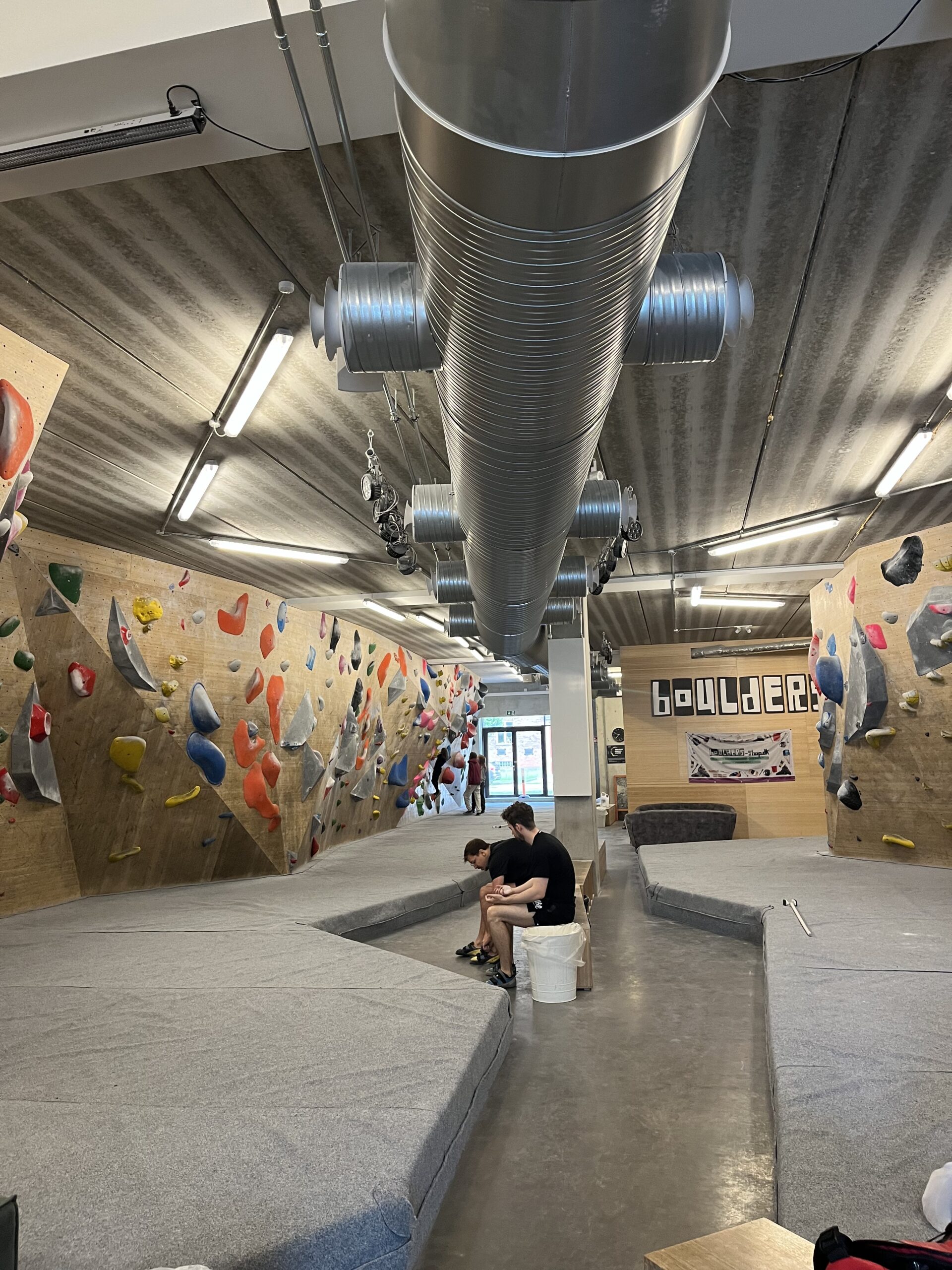Bouldering is a form of rock climbing performed on small rock formations or artificial climbing walls without the use of ropes or harnesses. Climbers typically scale boulders or walls that are up to 4-5 meters (13-16 feet) high. Safety is maintained through the use of crash pads placed on the ground and spotters who assist in directing falls safely.
Key Aspects of Bouldering:
- Height and Safety:
- Bouldering routes, known as “problems,” are usually less than 5 meters (16 feet) high.
- Climbers use crash pads to cushion falls and may have spotters to guide them safely to the ground.
- Bouldering Problems:
- Each route is called a “problem” because it requires problem-solving skills to complete.
- Problems vary in difficulty, requiring different techniques, strength, and agility.
- Indoor vs. Outdoor Bouldering:
- Indoor Bouldering: Takes place on artificial walls in climbing gyms. Holds are color-coded to define specific problems.
- Outdoor Bouldering: Occurs on natural rock formations. Problems are often named and rated for difficulty.
- Equipment:
- Climbing Shoes: Specialized shoes with sticky rubber soles to improve grip.
- Chalk: Used to keep hands dry and improve grip.
- Crash Pads: Portable mats used to cushion falls.
- Grading Systems:
- V Scale: Common in the United States, ranges from V0 (easiest) to V17 (hardest).
- Font Scale: Used primarily in Europe, named after Fontainebleau, France. Ranges from 1A (easiest) to 9A (hardest).
Benefits of Bouldering:
- Strength and Power:
- Focuses on developing upper body and core strength due to the demanding nature of the movements.
- Involves powerful and dynamic moves, enhancing overall physical strength.
- Technique and Skills:
- Emphasizes technical climbing skills, including precise footwork, body positioning, and efficient movement.
- Teaches problem-solving as climbers figure out how to complete each problem.
- Flexibility and Agility:
- Requires a high degree of flexibility to reach and hold onto small holds.
- Enhances agility and balance.
- Mental Focus:
- Develops concentration and mental toughness as climbers work through challenging problems.
- Encourages strategic thinking and planning.
- Social Aspect:
- Bouldering is often a social activity where climbers work together to solve problems and support each other.
- Climbing gyms and outdoor bouldering areas provide a community atmosphere.
Popular Bouldering Locations:
- Fontainebleau, France:
- Renowned for its high-quality sandstone boulders and a wide variety of problems.
- Known as one of the world’s premier bouldering destinations.
- Hueco Tanks, Texas, USA:
- Famous for its unique rock formations and diverse range of problems.
- Attracts climbers from around the world.
- Bishop, California, USA:
- Offers a mix of highball (tall) problems and shorter, technical problems.
- Located in a scenic desert environment.
- Rocklands, South Africa:
- Known for its beautiful sandstone boulders and challenging problems.
- A popular destination for international climbers.
- The Peak District, UK:
- Features gritstone boulders with a variety of problems.
- A historic and popular bouldering area.
Bouldering is a dynamic and accessible form of climbing that emphasizes strength, technique, and problem-solving. Whether indoors or outdoors, bouldering offers a fun and challenging way to develop climbing skills and physical fitness. Its social nature and relatively low barrier to entry make it a popular choice for climbers of all levels.

Leave a Reply